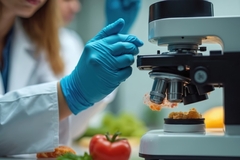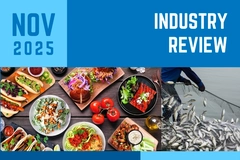
- Industry news
Industry news
- Category news
Category news
- Reports
- Key trends
- Multimedia
- Journal
- Events
- Suppliers
- Home
- Industry news
Industry news
- Category news
Category news
- Reports
- Key trends
- Multimedia
- Events
- Suppliers
WaSeaBi's sorting tech makes a splash by utilizing "head to tail" of fish

28 Jun 2022 --- WaSeaBi, a project funded by the European Union (EU) has developed sorting technology capable of precisely separating herring into all cuts, significantly increasing the quality of the off-cuts which retains much of its nutrients.
The sorting process separates the herring into head, backbones, viscera, belly flap, tail and the filet. The common practice when fileting pelagic fish is to collect all off-cuts in one bin. This reduces the quality of the off-cuts as they become contaminated with blood, enzymes and residues from the intestines.
The use and value become limited and the off-cuts are sold for feed production. If handled correctly, there is great potential for using the off-cuts for more valuable purposes such as high-quality food ingredients for fish burgers because it is rich in proteins.

Healthier fish products
WaSeaBi’s sorting technology has been implemented at the herring processing company Sweden Pelagic AB in close cooperation with Chalmers University of Technology.
The process requires a change in existing logistics, however, the fractions can form the basis for development of new products at Sweden Pelagic.
“The sorting technology gives us a lot more possibilities to develop new healthy and tasty seafood. In the long run, we hope it will give us better revenue,” says Martin Kuhlin, CEO, Sweden Pelagic AB.
One of the advantages of sorting herring fileting co-products is it helps avoid the most pro-oxidant-rich parts from contaminating more stable ones.
“I think that it will give us great advantages in the future. The technology will make it possible to extend our product range. This year, we estimate that we will produce around 200 to 300 tons of “herring mince” and the ambition is to increase that number every year,” adds Kuhlin.
 Ana advantage of sorting herring fileting co-products is it helps avoid the most pro-oxidant-rich parts from contaminating more stable ones.Increased production potential
Ana advantage of sorting herring fileting co-products is it helps avoid the most pro-oxidant-rich parts from contaminating more stable ones.Increased production potential
The companies believe the sorting technology will allow them to market their fish products to new consumer groups.
“In the first case, we will sell the products to the industrial customers, who manufacture pan-ready or eat-ready products. But we have experienced that also school kitchens and “public meal producers” have a great interest in the mince,” says Kuhlin.
The technology has been developed by rebuilding a fileting line for pelagic fish which fractionates and separates the fish into five different clean parts. This means that Sweden Pelagic AB now has five cuts instead of one which can be sold for production of food raw materials and ingredients such as minces, protein isolates, hydrolysates and oils.
The technology can also be applied to other fish species.
“I believe that we, in the fish industry, are way behind the meat industry, for example. They have been very good at taking care of the whole animal in a much better way than ‘our’ industry,” Kuhlin continues.
Lipid oxidation
The study, “Lipid oxidation in sorted herring (Clupea harengus) fileting co-products from two seasons and its relationship to composition” published in Food Chemistry can be consulted for information about the five sorted herring fractions’ susceptibility to lipid oxidation during ice storage.
One of the conclusions from the study is that sorting herring fileting co-products to reach a broadened food production from this species has the advantage that it helps avoid the most pro-oxidant-rich parts from contaminating more stable ones.
“It is of course important that the off-cuts are handled just as carefully as the main product i.e. the filet, where focus is on preserving the quality throughout the whole value chain. Thus, instead of seeing the off-cuts as side-streams or by-products, which indicates that they are “leftovers”, they should be seen as just another cut of the fish, just like in the meat industry,” says Ingrid Undeland, professor of food science, Department of Biology and Biological Engineering, Chalmers University of Technology.
Edited by Inga de Jong











